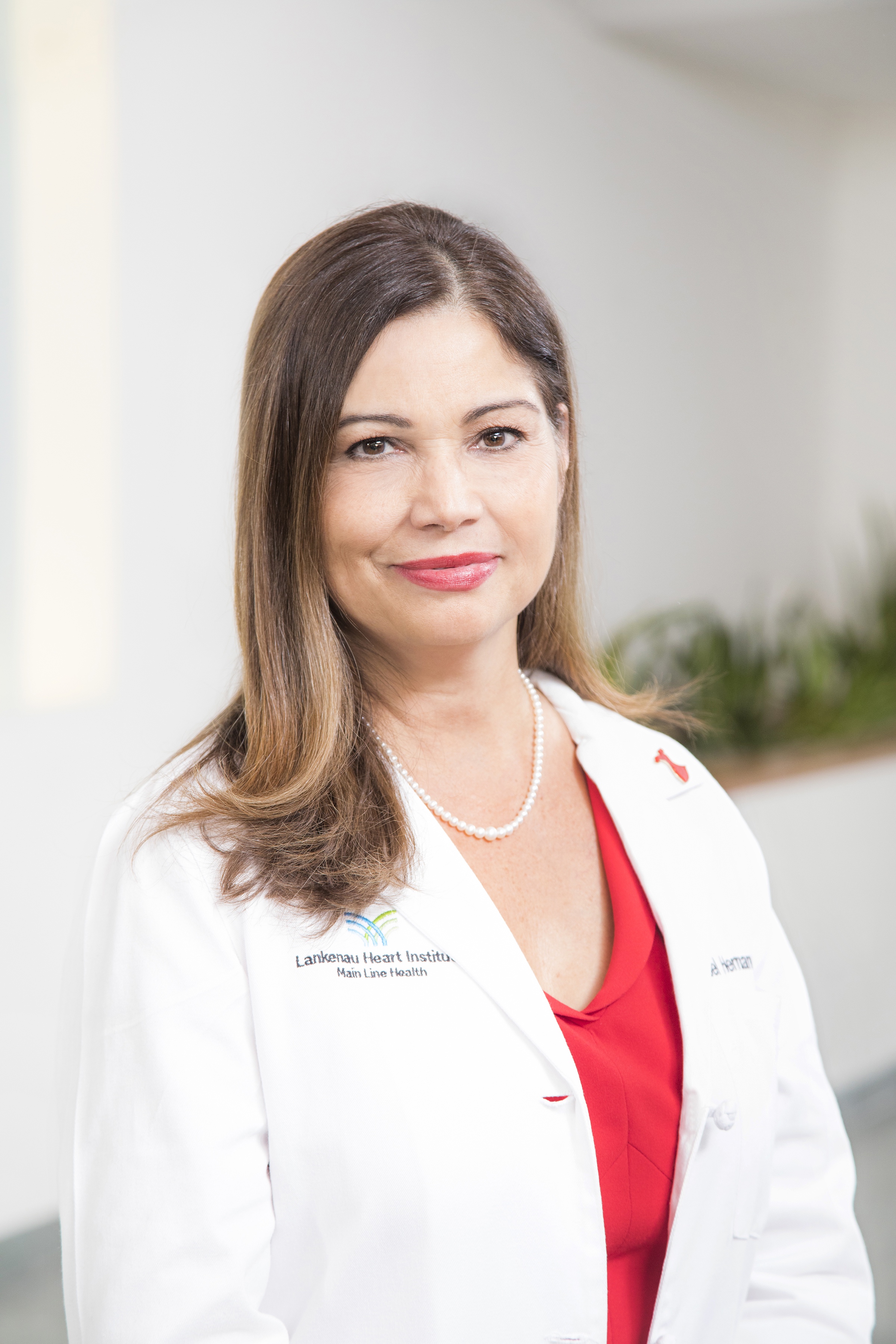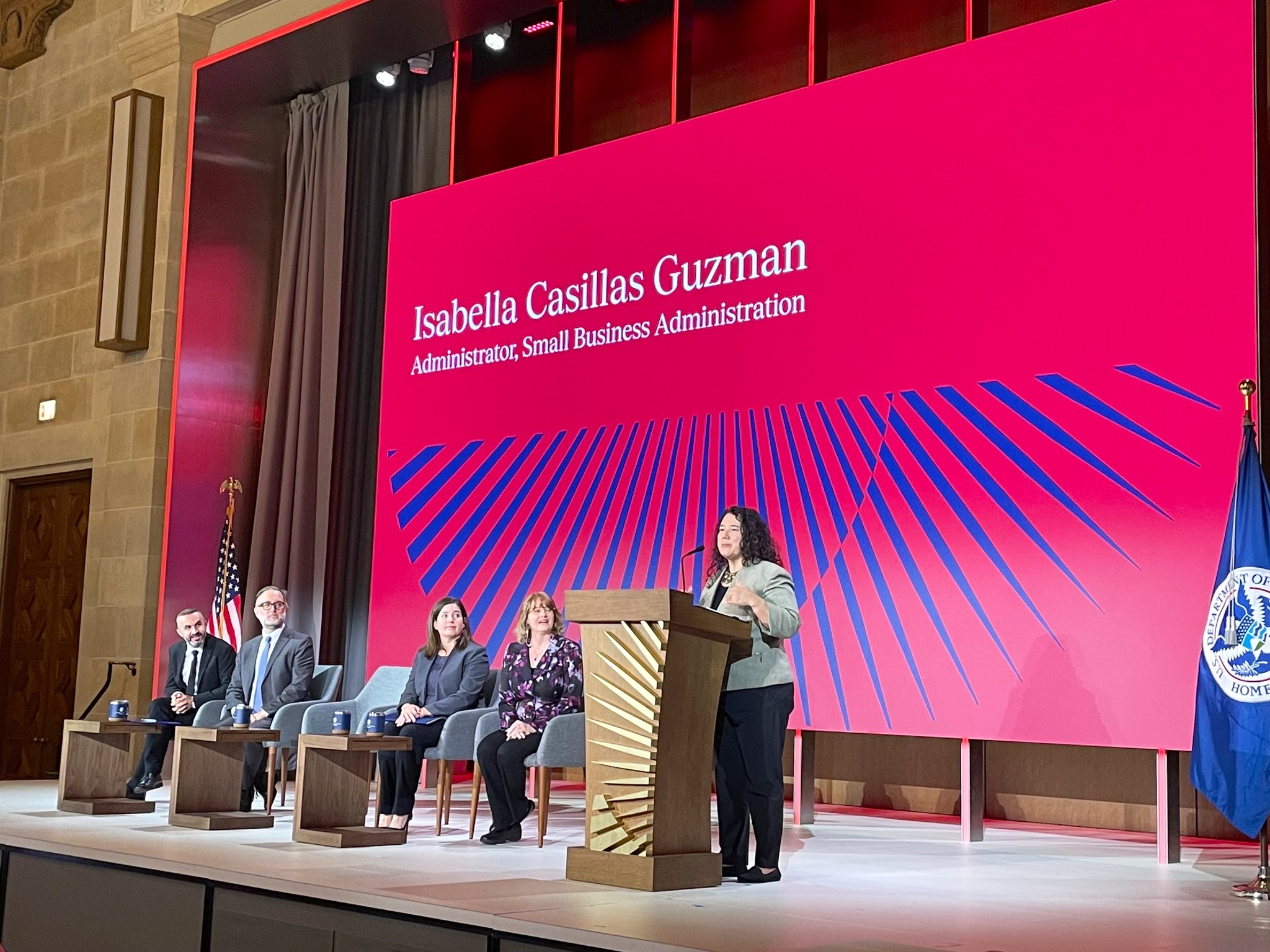
Highlighting the high cost of cardiovascular disease in women
Dr. Maribel Hernandez, a clinical cardiac electrophysiologist, is working to help women both clinically and educationally in order to prevent cardiovascular…
In 1963, President Lyndon B. Johnson designated February as American Heart Month in order to bring awareness to a disease that was severely affecting many people; and today, cardiovascular disease (CVD) is still a prominent health threat. According to the American Heart Association (AHA), a women dies every 80 seconds from CVD.
One in three women will lose their life to heart disease.
For Dr. Maribel Hernandez, a clinical cardiac electrophysiologist at Lankenau Medical Center, and the director of the Women’s Heart Initiative for the Main Line Health System, prevention and education are key in tackling cardiovascular disease. She also participates in events with the Go Red for Women movement through the AHA.
Hernandez pursued cardiology because she valued the intellectual, technical, medical and emotional aspects of the field - she is able to immediately aid a patient, but also develop relationships with them as she continues to follow and treat the case.
“Going back, what I liked about it is it's a combination of being able to do something immediately to help the patient get over a very difficult and serious condition but at the same time I can take care of these patients long term,” Hernandez said.
“You can imagine with heart disease there are times, it’s not always that way, but frequently this is truly a life or death situation, a very critical situation, and it’s great to have the tools to help someone get through those difficult times and help them get through to the other side and help the take care of them long-term,” she continued.
Hernandez typically spends most of her time treating patients in the hospital and office. While she no longer performs invasive procedures, such as implanting pacemakers and defibrillators, she occasionally completes minor procedures like cardioversions.

Hernandez emphasized that CVD is more than heart attacks; it involves many other health issues, such as strokes, hypertension, and problems with circulation. Some general symptoms include chest pain, which is often described as a feeling of squeezing pressure; chest discomfort that can occur at rest or with activity’; pain or discomfort in the jaw, back, neck stomach or arm(s); shortness of breath; feelings of lightheadedness; and nausea or vomiting.
While women may experience some of these symptoms, they may be unaccompanied by chest pain or discomfort. This makes it more difficult to recognize any threat of CVD, according to Hernandez. One of the main symptoms women experience is shortness of breath.
“For example, if you always go up and down the steps in your home, or you bring the laundry from the basement upstairs, or you’re walking or you’re jogging, or even walking around, something you do regularly and you always feel fine,” Hernandez said. “And then suddenly unexpectedly, doing the same thing you start getting really short of breath when the day before you didn't have any problems.”
If you experience any sudden changes in the pattern of how you normally feel, this could be a strong indication that you need to see a doctor. People often ignore some of the key symptoms of heart attacks because they can often be associated with other issues - for example, shoulder and upper back pain could be attributed to a muscular problem or arthritis.
If you experience any sudden changes in the pattern of how you normally feel, this could be a strong indication that you need to see a doctor.
According to the AHA, the acronym “F.A.S.T.” can be used as a reference to identify stroke symptoms. This stands for for: “face drooping, arm weakness, speech, and time to call.”
Other stroke symptoms include sudden numbness, sudden confusion, sudden trouble seeing, sudden trouble walking, and a sudden, severe headache, according to the AHA website.
If you experience any symptoms associated with a heart attack or stroke, it is urgent to seek medical attention immediately. The advanced medical technology allows for the prevention of damage to the heart and brain if the patient is treated within two hours of experience the symptoms, according to Hernandez.
“And I know most of us never want to go to the emergency room, but when it comes to the heart and the brain and those kind of symptoms, it’s better to go and be told ‘oh you’re ok,’ then wait and have permanent heart damage or permanent disability from stroke,” Hernandez said.
Heart disease is the most common cause of death among women, its prevalence much greater even than cancer.
“For example, around 400,000 women die a year from cardiovascular disease compared to about 40,000 from breast cancer,” Hernandez said.
Hernandez encourages people to learn about their risk of developing CVD so they can initiate a conversation with their doctor. The first step in understanding the risk is examining your family history, for instance if anyone under the age of 50 or 60 died suddenly; if anyone had developed heart failure of issues with their cholesterol at a young age; or if anyone experience a heart attack or stroke between the ages of 30-50. These could all be warning signs that you are at risk for CVD.
“Having a genetic condition – let’s say you have a family history of very high cholesterol or everyone in your family has a history of weak heart muscle that is genetic – if you take care of yourself, you can improve your chances as compared to maybe your family in the past that were not knowledgeable, they didn't know how to prevent heart disease.”
RELATED CONTENT
“Diabetes is one of the really critical and most common risk factors for heart disease, especially in the Hispanic community,” Hernandez said. “We have a high incidence of diabetes. Check your blood sugar, if you have diabetes, you need to be really strict and control and take medication and monitor it because you can prevent heart disease with that.”
Women have unique risks for developing CVD, which many physicians and cardiologists often forget to address, Hernandez noted.
Some of these unique risks include complications during pregnancy such as preeclampsia gestational diabetes, and preterm birth; although some of these issues may resolve naturally after delivering, they still place women at a higher risk for developing CVD.
“...We are currently developing a program to identify these women before they leave the hospital and make sure that they have follow ups with a cardiologist later on to initiate regular follow ups and prevention because these women who develop high blood pressure at a younger age may develop diabetes and heart problems,” Hernandez said.
Smoking cigarettes and using hormonal contraceptives also place women at a higher risk for developing clots. Other risk factors include chemotherapy or radiation to the chest and inflammatory conditions such as lupus or rheumatoid arthritis.
“One of the things that I encourage women [to do] is, number one, you need to be your own advocate and initiate the conversation with your doctor and ask them if you are at risk, because many physicians will not necessarily discuss your risk of heart disease or the risk of heart disease in women,” Hernandez said. “It’s a conversation that I encourage women to initiate themselves and be their own advocate.”
According to Hernandez, 80 percent of heart conditions can be prevented through various measures. Regular doctor visits are necessary in order to continue monitoring your blood pressure, cholesterol, and blood sugar levels. If you have irregular levels in any of these areas, it should be treated with medication in order to control those levels. Even if you are genetically predisposed to certain conditions, taking steps towards a healthier lifestyle can help to avoid CVD.
Another step in prevention is healthy eating. The AHA recommends choosing lean proteins, such as seafood and chicken; avoiding carbohydrates filled with sugars; decreasing the intake of trans fat; and ensuring you are getting enough fiber in your diet. These steps can help prevent diabetes and cholesterol, which may lead to heart disease.
Hernandez further recommends cutting back on processed foods and creating a balanced diet with grains, healthy oils, fruits, and vegetables.

“You can eat everything, but cut back in the amounts and cut back on the carbohydrates and add more healthier vegetables and fruits,” Hernandez said. “That's very important.”
Staying active is key component of prevention as well. Hernandez recommends 150 minutes of activity a week, or 20 minutes a day. Even if you do not have enough time to go to the gym and exercise all at one time, any movement is effective. If you are sitting at a desk all day at work, she recommends taking breaks in order to move around and even climb the steps, if possible.










LEAVE A COMMENT:
Join the discussion! Leave a comment.